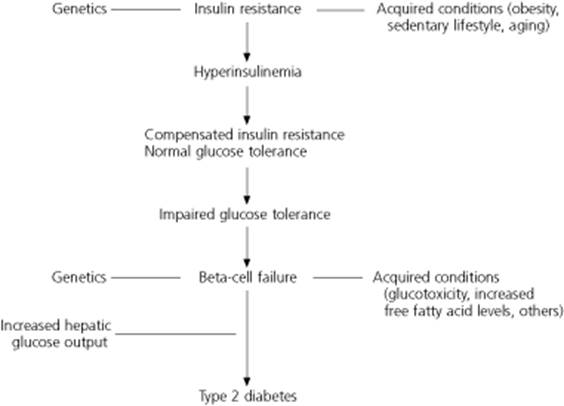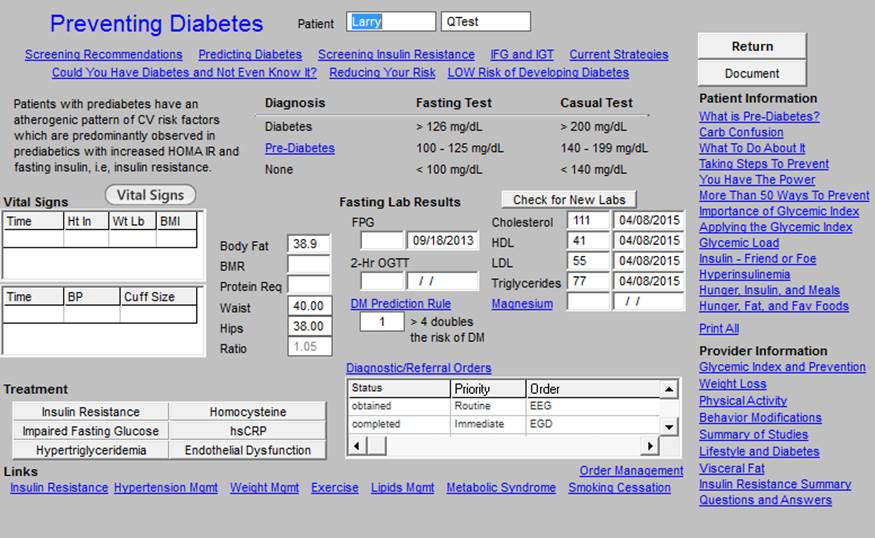|
January 22, 2016
Ms. Karen Kmetik
American Medical Association
Karen, I am glad that I dialed the wrong number yesterday and spoke with you. Thank you for the very exciting collaboration between the AMA, CDC, ADA and the Ad Council regarding Pre-Diabetes. SETMA has worked with each of the organizations except the AD Council. As you know, SETMA has just completed our seventh year of public reporting by provider name on 300 quality metrics, many of which are from the AMA’s PCPI (see: Public Reporting - Reporting by Type). Since 2003, SETMA has maintained ADA recognition of our Diabetes Self Management Education Program and our Medical Nutrition Therapy program. And, we have worked with the CDC for HIV Screening and with their influenza-like illness network (see: Your Life Your Health - Certificate of Appreciation: Centers for Disease Control).
Pre-Diabetes
Sixteen years ago, SETMA designed and deployed a robust Diabetes Center of Excellence with a Diabetes Disease Management Tool (see EPM Tools - Diabetes). Very shortly after deploying that tool in 2000, we realized that “The best way to treat diabetes is not to get it.” This led us to begin both a diabetes screening program and an aggressive treatment of pre-diabetes. The following are parts of SETMA’s Pre-Diabetes and Diabetes Prevention Program:
- LESS Initiative – Lose Weight, Exercise Stop Smoking, which includes a diabetes screening program – the complete tutorial for this program can be found at EPM Tools - LESS Initiative Tutorial. AHRQ has published this on their Innovation Exchange.
- Preventing Diabetes – which is the heart of our pre-diabetes program. We are aggressive about using the following ICD-10 codes: Pre-Diabetes (R73.09, Impaired Glucose intolerance (R73.02), Impaired Fasting Glucose (R7301) – the complete tutorial for this program can be found at EPM Tools - Diabetes Prevention Tutorial.
- Preventing Hypertension -- the complete tutorial for this program can be found at EPM Tools - Hypertension Prevention Tutorial.
- Cardiometabolic Risk Syndrome – integral to this disease process is the progression from personal habits and genetic predisposition to full blown diabetes (see: EPM Tools - Cardiometabolic Risk Syndrome Suite of Templates Tutorial). It was the ADA which promoted the change of this syndrome’s name from “Metabolic Syndrome” (previously Syndrome X and Insulin Resistance Syndrome) to “Cardiometabolic Risk Syndrome”. The natural history of the development of diabetes from pre-diabetes is a part of our Cardiometabolic Risk Syndrome Disease Management Tool.
Progression to Type 2 Diabetes
The progression from normal glucose tolerance to type 2 diabetes is characterized by dual defects that include insulin resistance and an insulin secretory defect caused by beta-cell dysfunction (Figure 1). Insulin resistance is characterized by decreased tissue sensitivity to insulin and marked compensatory hyperinsulinemia. Initially, plasma glucose levels are maintained in the normal range. In patients who will eventually develop diabetes, there is a decline in beta-cell secretory capacity.
The first glucose abnormality that is detected is a rise in the postprandial glucose levels because of reduced first-phase insulin secretion. With time, further decline in beta-cell function leads to elevation of the fasting glucose levels. Eventually, diabetes occurs, with more insulin secretory loss.

The following is a brief introduction to our work in this area. This is the master template to the LESS Initiative which is completed on all patients who come to SETMA. It includes the Elements of Preventing Diabetes which are also the Risk Factors for Developing Diabetes. This information is auto populated and takes a second to complete.

The following Preventing Diabetes template is looks busy but all data is auto populated. The information can be printed for provider or patient and includes “Predicting Diabetes,” “Screening Insulin Resistance,” Definitions of Impaired Fasting Glucose and Impaired Glucose tolerance,” “Reducing Your Risk of Diabetes,” etc. Down the right side of this template there are multiple teaching tools including “What is Pre-Diabetes?,” “What to do about it,” and many more.

Your announcement included the following:
“We invite you to partner with us to raise awareness of pre-diabetes and this special Ad Council campaign. The partner toolkit below provides you with access to a variety of materials to help, including pre-packaged content and language that you can leverage via your existing channels or any new opportunities that may be a good fit. “
SETMA will continue our program and we will review your materials. As you know, for the past 20 years, I have written a weekly heath column for a local newspaper (see Your Life Your Health - View All Articles) and I will include information about your program in my column. A search of our website shows over thirty Your Life Your Health articles on pre-diabetes dating back to 2002. The following are links to several of these:
Look forward to working with you in whatever way is helpful.
James (Larry) Holly, M.D.
C.E.O. SETMA
www.jameslhollymd.com
Adjunct Professor
Family & Community Medicine
University of Texas Health Science Center
San Antonio School of Medicine
Clinical Associate Professor
Department of Internal Medicine
School of Medicine
Texas A&M Health Science Center
|